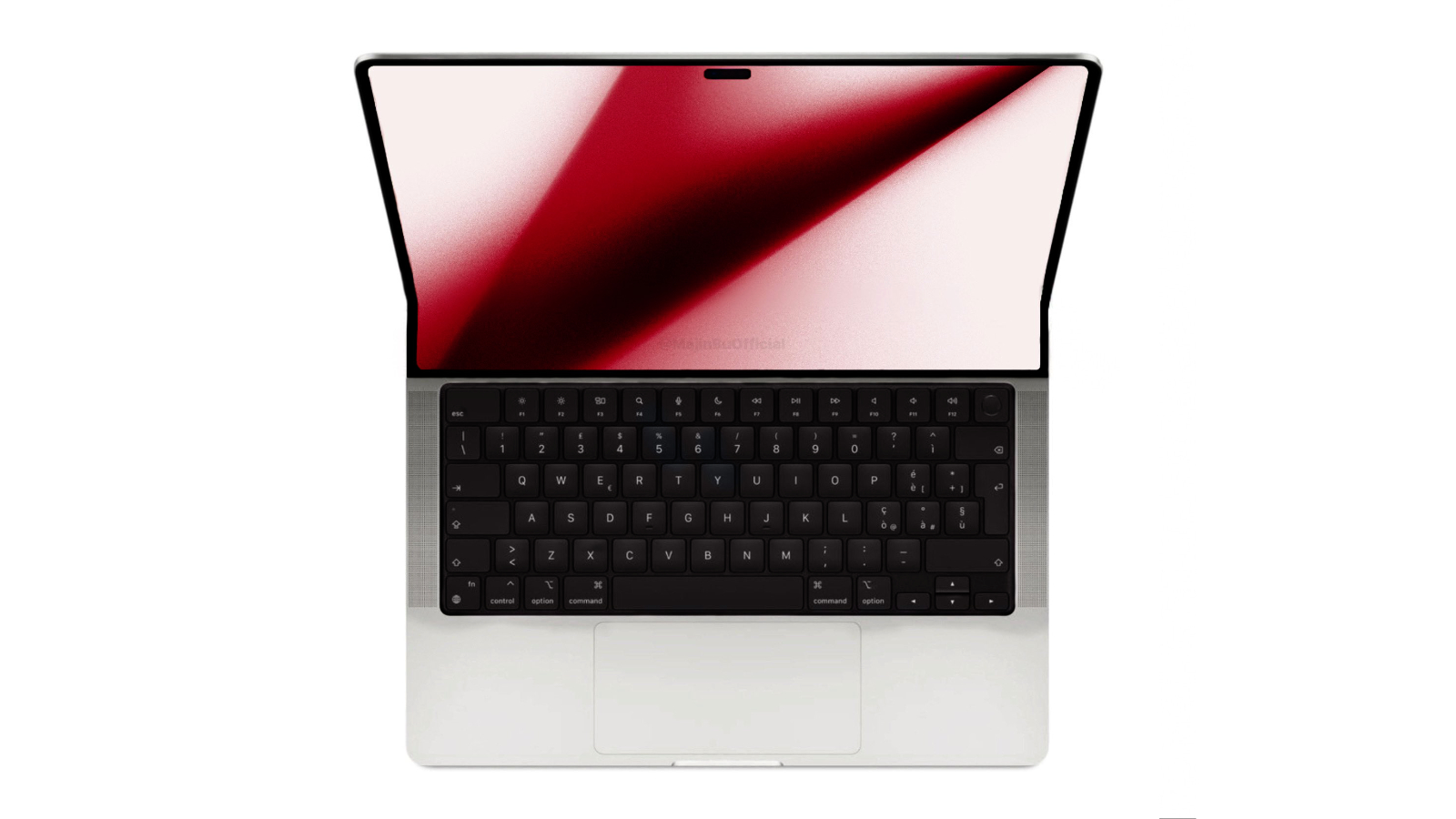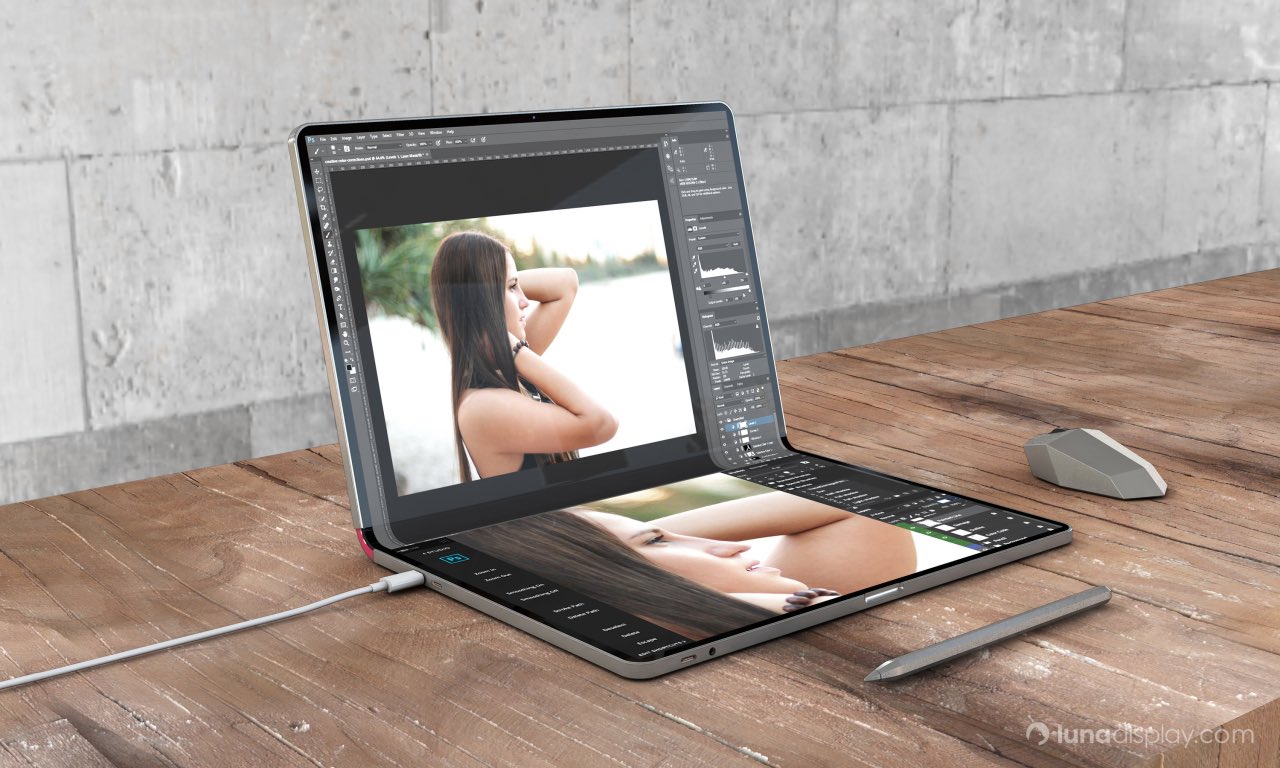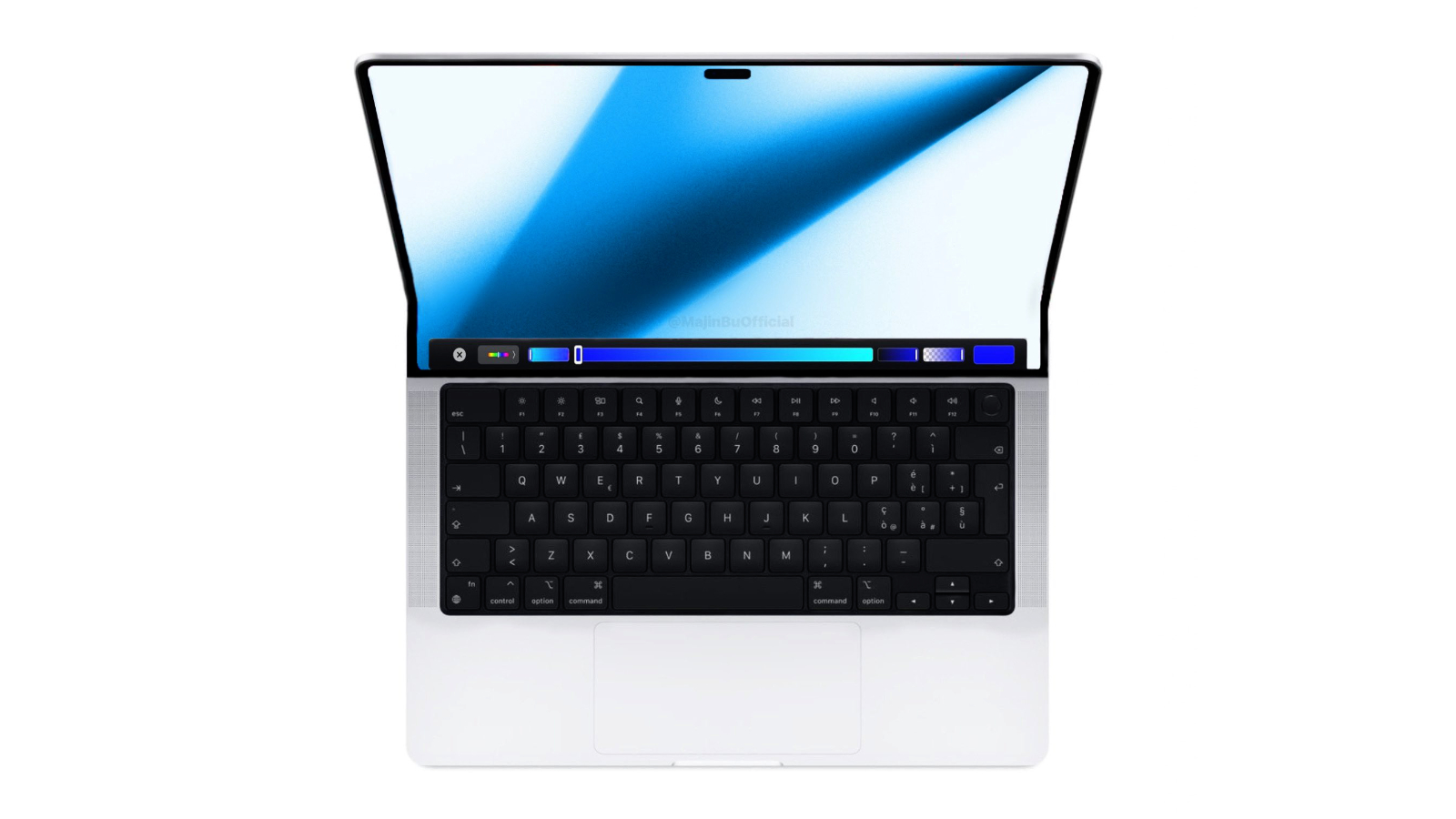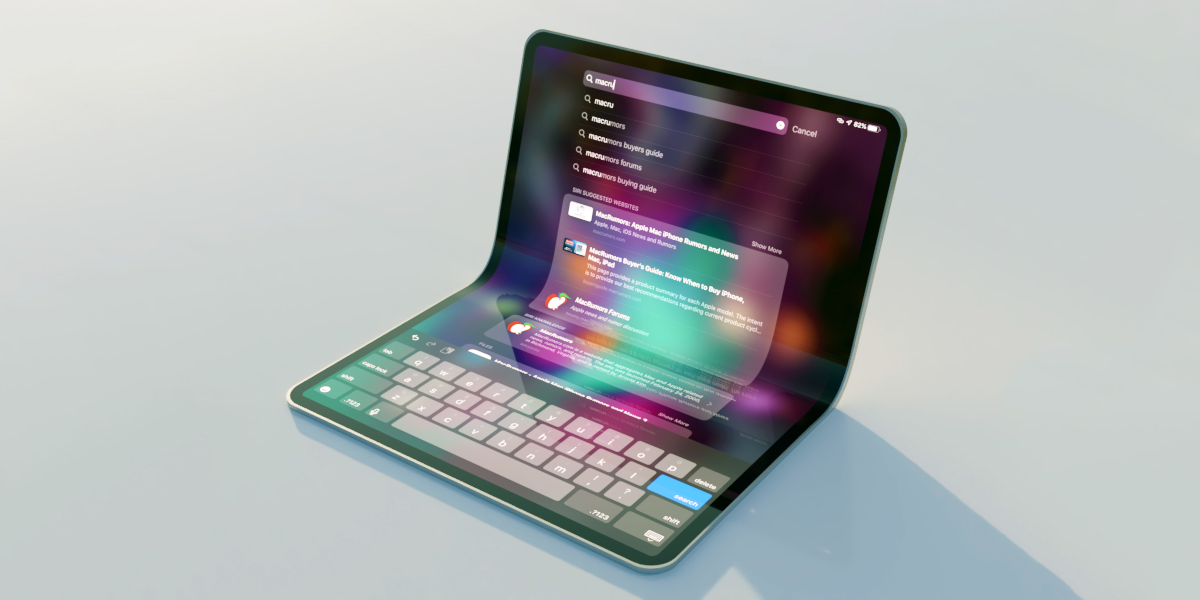Samsung's DeX makes a lot of sense on paper. Make a device you always have on you a central hub, and allow accessories to quickly pair with it. Samsung's solution fails because their phone and PC divisions are at odds with each other.Hear me out...
Some of us prefer desktop setups, yet we occasionally want to bring our computers elsewhere. My main gripe for a while now has been the fact that owning and operating two different computers is a pain — less so when considering we now have fine continuity features, but still not as convenient as working from a single computer.
So, why not just buy an external monitor and plug a laptop into it? I do think that this makes for perhaps the most versatile computing setup; however, there can exist a cleaner way of achieving a hybrid setup. The main issue with using an external display is that it's useless and idle once you remove your laptop from it. Then, at that point, it's just taking up space on your desk. (Perhaps you wanted it clear so that you could do actual drafting, or some other physical project.) You also now have an expensive device sitting around, while you're presumably not present. Theft is a problem.
Why not have a laptop that can more literally transform into a desktop? All you'd need to do is keep a simple keyboard and mouse in your desk drawer, and there you have everything you need. No need to purchase and house a spare screen — just unfold your laptop and enjoy greater screen real estate. We complain Apple no longer innovates... so, let's give them a chance to do so with this alleged product.
Got a tip for us?
Let us know
Become a MacRumors Supporter for $50/year with no ads, ability to filter front page stories, and private forums.
How Would a MacBook With a Foldable Display Work?
- Thread starter MacRumors
- Start date
- Sort by reaction score
You are using an out of date browser. It may not display this or other websites correctly.
You should upgrade or use an alternative browser.
You should upgrade or use an alternative browser.
Lol frfr. Definitely do NOT want.Dear God it's the Return of the TouchBar by other means.
Lol same. BIG no.That's going to be a no from me.
I sorta get folding phones—although not enough to get one unless they get way thinner and way sturdier. The idea is to get a bigger screen to fit in your pocket. Okay.
What on earth would be the point of a folding laptop or tablet? Beyond a certain size, it seems like it's not worth it for any reason. The extra expense, complexity, probability of failure, etc. for... seriously? For what?
I get folding/rolling screens. I can see a place for those.
I just cannot see a place where replacing the physical inputs with more screen and making it foldable instead of just a tablet makes any sense. Maybe there's a world where a really big folding/rolling tablet makes sense, but in the laptop domain it's ridiculous. (And the more I think about folding phones, I think they're kinda bonkers.)
Honestly, the device I really want is a tablet running macOS. I rarely use my laptop as a laptop. It's either at a desk being used as a desktop or being used for quick little... whatever or content consumption. I would be fine with something like an iPad where I have a desk at home with big screens and a keyboard/mouse and, on the road, either a pure tablet or if I needed to do much input, just have some kind of travel keyboard setup.
It's really nice having once device with everything. Since moving back to a desktop that's probably my main complaint is when I have to be away, my data is mostly parked.
What on earth would be the point of a folding laptop or tablet? Beyond a certain size, it seems like it's not worth it for any reason. The extra expense, complexity, probability of failure, etc. for... seriously? For what?
I get folding/rolling screens. I can see a place for those.
I just cannot see a place where replacing the physical inputs with more screen and making it foldable instead of just a tablet makes any sense. Maybe there's a world where a really big folding/rolling tablet makes sense, but in the laptop domain it's ridiculous. (And the more I think about folding phones, I think they're kinda bonkers.)
Honestly, the device I really want is a tablet running macOS. I rarely use my laptop as a laptop. It's either at a desk being used as a desktop or being used for quick little... whatever or content consumption. I would be fine with something like an iPad where I have a desk at home with big screens and a keyboard/mouse and, on the road, either a pure tablet or if I needed to do much input, just have some kind of travel keyboard setup.
It's really nice having once device with everything. Since moving back to a desktop that's probably my main complaint is when I have to be away, my data is mostly parked.
But if they never “wear out” how will they continue selling you more?I would rather have a dual screen device that won't wear out as its being used. I also think that it would work better as an iOS device rather than a Mac.
Combine an all-screen computer with this 2014 Apple patent that raises bumps on a screen to form keys, and you might have a viable product.

 techcrunch.com
techcrunch.com


Apple Patents Flexible Display Tech That Turns Screens Into Buttons, Microphones And More | TechCrunch
Apple has a new patent granted by the USPTO today (via AppleInsider) that describes various control mechanisms that could be used with flexible displays,
Thats true, but I don't really think that Apple really pushes people to update that often.But if they never “wear out” how will they continue selling you more?
Hear me out...
Some of us prefer desktop setups, yet we occasionally want to bring our computers elsewhere. My main gripe for a while now has been the fact that owning and operating two different computers is a pain — less so when considering we now have fine continuity features, but still not as convenient as working from a single computer.
So, why not just buy an external monitor and plug a laptop into it? I do think that this makes for perhaps the most versatile computing setup; however, there can exist a cleaner way of achieving a hybrid setup. The main issue with using an external display is that it's useless and idle once you remove your laptop from it. Then, at that point, it's just taking up space on your desk. (Perhaps you wanted it clear so that you could do actual drafting, or some other physical project.) You also now have an expensive device sitting around, while you're presumably not present. Theft is a problem.
Why not have a laptop that can more literally transform into a desktop? All you'd need to do is keep a simple keyboard and mouse in your desk drawer, and there you have everything you need. No need to purchase and house a spare screen — just unfold your laptop and enjoy greater screen real estate. We complain Apple no longer innovates... so, let's give them a chance to do so this time. Finally, with M1, Apple is off the Intel treadmill and can make products that really excite people. These are the sorts of things Apple tried to do with Motorola but couldn't do so — nor with IBM, nor with Intel. The mainstream laptop computer has existed since the early 1990s. When are we going to improve upon it?
This seems way too niche. The main question is: how does the folding really help?
Seems like a tablet running macOS solves the issue. Have whatever inputs you want on the road (or none if you just use touch inputs) and then plug into a docking station at your desk. You could either use the tablet as your screen or as one of multiple monitors.
Unless I am missing something, the only point of a folding device is for a smaller footprint, but beyond pocket size, you're carrying a bag anyway. The folding doesn't make a lot of sense with virtual inputs. I don't think there's a large crowd of people touch typing without looking on virtual keyboards.
The other issue is size. Even a single 27" monitor folded in half is... large.
You have to find a space where someone wants a single machine, wants a single display when working at a desk, is all right with that single display being in a particular size range where folding it in half isn't ridiculous, and wants to also use this machine on the road.
Most people I know who use laptops professionally do not use them exclusively. They have a desk (or desks) with larger setups and in most cases are using displays much bigger that your scenario. Additionally, and I realize this is entirely anecdotal on my part, the handful of people I know who use their laptop exclusively... aren't doing anything I would consider "real" work of any kind.
Basically, someone has to really love getting by on like a 20-24" screen max and also using virtual inputs on a folding device. That seems like a ton of compromises for a very small group of people.
What a horrible world, where I have to choose between folding screens and VR headsets. Sign me up for one of them folding phones, I guess. (Or I could join the Amish, I suppose.)As a product design and materials selection engineer with decades of product development experience, the science says absolutely not. The reversing stresses endurance limits all known materials more than suggest that it isn't postsible now and isn't likely in the future. I would posit that we are as equally likely to develop faster than light space travel or Start Trek transporter technology. Moreover, there is little economic need for such a display and, therefor, little incentive to develop the materials or product designs that would define the need that would be the mother for inventing them.
I would expect VR eye-wear tech that follows your eye and head movements and that simulates a supersized display that is used in conjunction with a physical keyboard or even a more innovative virtual touch or gesture interface.
Calm down, it is a rumours site.Utter nonsense
View attachment 1963934
MacRumors should be more careful with the gossip they publish. Otherwise, any reputation will quickly be gone. Everyone who reads PatentyApple knows that Apple makes many claims without having the intention to implement them.
'Display Supply Chain Consultants (DSCC) analyst' Ross Young wants to stand out somehow; some make their living that way.
With the hinge locked in the closed position?how exactly could such a device be implemented?
And the butterfly keyboard fiasco. Aside from being failure-prone, that piece of crap had horrible tactile feedback.Great idea for an iPad Pro -- horrible idea for a MacBook. Hasn't the TouchBar fiasco taught them yet that people just want a great PHYSICAL keyboard???
Last edited:
How Would a MacBook With a Foldable Display Work?
Poorly?
Just say no! The foldable phones are having issues, so 'go big'? Um...
No?
we just got good keyboards and the perfect form factor (14 inch MacBook pros). I'm looking forward to buying one at some point and then riding out foldable screens till the fad ends or they actually get good.
I would take that over the an M1 MBP with touchbar. Plus this would give you a touchscreen device that runs MacOS. I doubt the latter and iOS will ever merge.
Amid reports of Apple working on a notebook with a foldable display, how exactly could such a device be implemented?
Concept by Majin Bu
Earlier this week, Display Supply Chain Consultants (DSCC) analyst Ross Young claimed that Apple is exploring the possibility of offering notebooks with foldable displays. The company is said to be discussing such devices with displays around 20-inches in size with its suppliers. This display size could allow for 4K resolutions or higher, Young added.
Young has revealed a wide range of accurate insights into Apple's plans, such as the iPhone 13 Pro's ProMotion display, the display size and bezels of the sixth-generation iPad mini, the 14- and 16-inch MacBook Pro's mini-LED displays with ProMotion, and more, so his reports are worth taking seriously. He says that the foldable notebook could compose a whole new product category for Apple, but with so little known about the mysterious new form factor at this very early stage, there appear to be three main options for how Apple could conceive of the device.
All-Screen MacBook
Perhaps the most obvious implementation for a foldable Apple notebook is an all-screen MacBook with a display that spans the entire interior of the clamshell design. Young appeared to speculate that this implementation could result in a dual-use product, saying that it may be able to work as a notebook with a full-size on-screen keyboard when folded and as a monitor when unfolded and used with an external keyboard.
Concept by Astropad
There are two main drawbacks to the likelihood of this design. The first is Apple's well-known reticence to offer a touchscreen-based Mac, with company executives often publicly shooting down the possibility of it ever offering such a device. For example, former Apple design chief Sir Jony Ive has said that a touchscreen Mac would "not be a particularly useful or appropriate application of Multi-Touch."
macOS is heavily optimized for indirect trackpad or mouse input, rather than touch. In 2020, Apple engineering chief Craig Federighi said that Apple designed and evolved the look of macOS in a way that felt comfortable and natural across a family of devices, and something like touch is not remotely considered. This is not to mention the potential ergonomic issues of a touchscreen keyboard and trackpad. As a result, an all-touchscreen MacBook seems to be very much out of step with the company's thinking in recent years.
Foldable Display With Physical Keyboard
A more out of left field form factor could be a MacBook with a vertically longer display that folds at the hinge and meets the device's physical keyboard. This solution could offer the benefits of a larger display with room for peripheral on-screen content, while still retaining the benefits of a physical keyboard and trackpad.
Concept by Majin Bu
The design could also offer a way to revive the Touch Bar without sacrificing physical function keys. In another interview, Federighi explained that the MacBook Pro form factor with the Touch Bar avoids the ergonomic problems caused by other touchscreen laptops: Regardless of whether or not the Touch Bar is revived, extending the MacBook's display in this way would abide by Apple's ergonomic demands of not lifting one's arms to touch the screen while offering a new location for touch input.
In this instance, the 20-inch display size could be more plausible, potentially offering an even larger MacBook Pro to sit above the 16-inch model in the lineup, akin to the 17-inch MacBook Pro that the company offered between 2006 and 2011.
Just a Foldable iPad Pro?
While Young described the device as a "foldable notebook," there is a chance that, if it is an all-screen device, it could actually be a foldable iPad Pro. After all, a touch-based all-screen notebook running macOS would likely cannibalize the iPad Pro, so the device running iPadOS could make more sense.

This thinking would also seemingly line up to Apple's current outlook. When asked about touchscreen Macs last year, John Ternus, Apple's senior vice president of hardware engineering, pointed to the iPad:
There have been sketchy rumors of Apple working on a foldable iPad Pro in the past, so the idea would not be totally unheard of.
It is also noteworthy that this implementation could also line up with rumors of a larger iPad Pro. Last summer, Bloomberg's Mark Gurman suggested that Apple was working on even bigger iPad models that could further "blur the lines" between tablet and laptop:Now, at least two Apple suppliers, BOE and LG Display, are preparing to supply Apple with OLED displays in larger sizes for future iPad models.
Larger display sizes may bring the iPad closer the Mac than ever before, but there would likely also need to be software improvements to properly take advantage of the larger display. Apple last updated the iPad Pro in April 2021, but some users have complained that iPadOS does not take full advantage of the hardware the iPad Pro has to offer, making it more challenging to replace a Mac than it could be.
Gurman opined that Apple will ultimately need to allow Mac apps and a Mac-like multitasking experience with more flexible arrangements of app windows on the iPad Pro. By the time even larger iPads come to market, it is likely that further iterations of iPadOS may improve the experience to take better advantage of the iPad's hardware.
Release Date
Young said that the launch timeframe for Apple's foldable notebook is "likely later" than 2025, with 2026 or 2027 being floated as reasonable possibilities, but there is still a chance Apple discontinue the project long before then.
Meanwhile, Young said that Apple's long-rumored foldable iPhone has been delayed until 2025, a significant delay compared to previous predictions that the device would launch in 2023 or 2024.
Article Link: How Would a MacBook With a Foldable Display Work?
After all these years and all the elaborate dancing around making a desktop-class tablet, while eventually trying to do that anyway, a simple 15" iPad Pro with OS X is all that's still missing. I don't believe that by now anyone has to enumerate all the bullet points against Apple Brass' hyperbolic arguments against it. There is no technical reason it doesn't work, and we know this because OS X has run on high precision Pen and touch tablets from Wacom with large displays for over a decade perfectly well, they just cost $5k and are a continual pain in the butt to acquire and set up properly, because Wacom phones in their config software. And now that iOS and OSX both run on ARM chips, the hardware isn't even an excuse anymore. That Apple has continually dismissed the concept without any better reasoning behind their answers, over fifteen years, tells me either: in the biggest company in the world, a computer manufacturer with a ton of engineers and designers, no one has never actually sat down and thought about the future of the products they make, OR, they have arrived at a very lucrative reason for not even entertaining the idea for a half a dismissive sentence in all this time. If I'm Apple, I know damn well that an actual iPad Pro destroys the Surface on its own playing field, and doesn't stop there, but goes on to utterly cannibalize sales across the MacBook Air, MBP, and iPad Pro lines. If you want to play it safe and not upset the money cart, you don't introduce a single product stuck at one margin that mops the floor with 3 whole ranges of your best selling products. So we have a neutered iPad Pro, and MacBooks stuck in a form factor from the 1990s.
No not the 80s, have you seen what laptops looked like in the 80s? 1990s.
No not the 80s, have you seen what laptops looked like in the 80s? 1990s.
Apple patented that over a decade ago. I remember, because at that time I had already also made a mockup of a two-screen MacBook, with configurable touch surfaces on the horizontal section and a simple display on the vert. The use of sound waves to create a haptic sensation of a divot for your fingers to feel a "key" on flat glass was the missing part, and when that patent filing surfaced, I was sure they were going to do it. Then they came out with the iPad instead.No physical keyboard = no buy unless apple finds some genius way of making the typing portion of the screen tactile.
Register on MacRumors! This sidebar will go away, and you'll see fewer ads.


